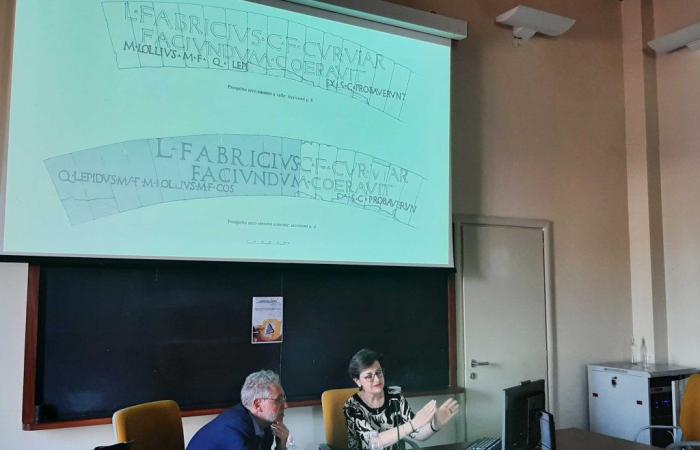Intelligent systems to analyze and to interpret the historical sources, filling gaps due to lack of documentation, formulation of hypotheses based on correlations that can be assumed as causes in historiographical reconstructions. These are just some of the results we are able to achieve nowadays.
And in this framework the placement of the material historical source (epigraphic and iconographic) is even more difficult than it was decades ago. But how important is it to start from the latter for an adequate promotion and use of cultural heritage, also and above all in the digital age?
He answered this question Silvia Orlandiprofessor of Latin Epigraphy at the University of Rome “La Sapienza” and responsible for the EDR database (Epigraphic Database Rome), speaker of the last appointment of the third cycle of seminars de Classic Mondays (go to Carlotta Fortuna’s in-depth article).
Thanks to the study of the papers contained in the “Silvio Panciera” Latin Epigraphy Archive, Professor Orlandi underlined how «through the symbiosis between digital and classical, a recovery of new testimonies considered irremediably lost can be carried out».
The teachers Orazio Licandro and Silvia Orlandi during the meeting at the Benedictine Monastery
The 65 years of uninterrupted work in the immense, almost inexhaustible reservoir of discoveries that the “Panciera” Archive represents, in fact, have led to the creation and updating of a container rich in discoveries and research: 6×6 negatives made with Hasselblad cameras, autograph cards by Panciera (from 1959 to 2005), casts of inscriptions, drawings by the Spanish archaeologist Emilio Rodríguez Almeida (like those of the amphorae of Monte Testaccio), and thousands of compiled and unpublished cards.
«Without a solid traditional foundation, founded on archival papers and documents, digital cannot be born». This is how Silvia Orlandi expressed herself, highlighting how necessary and fundamental the role played by physical support is in the valorisation – also via the web and digital in its many forms – of cultural heritage in every aspect.
The teacher continued, admitting how «the importance of epigraphic research has been lost, especially the aspect concerning the “long duration” inherent in such research».
The video interview
In the interview, Professor Silvia Orlandi highlighted how «at the basis of a good success of digital projects like EDR, there is a good knowledge of non-digital epigraphy: for example, a good use of traditional sources».






